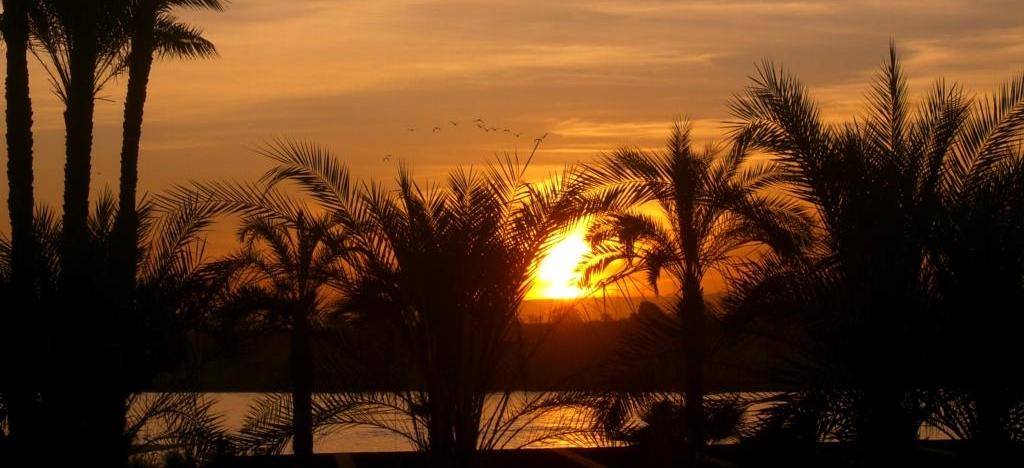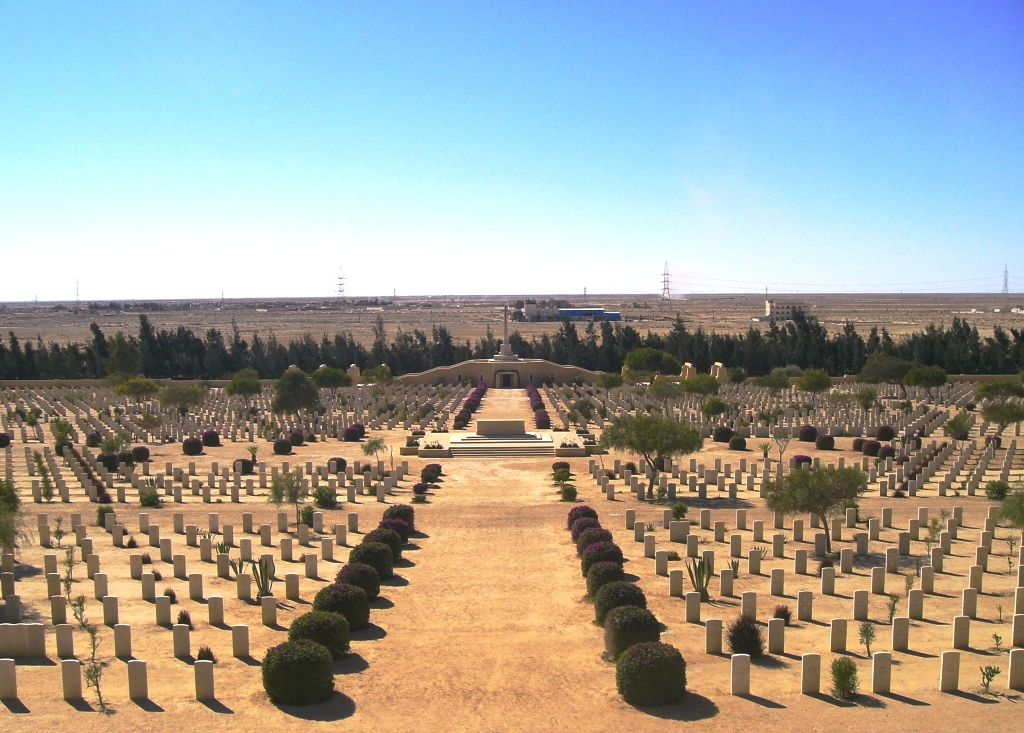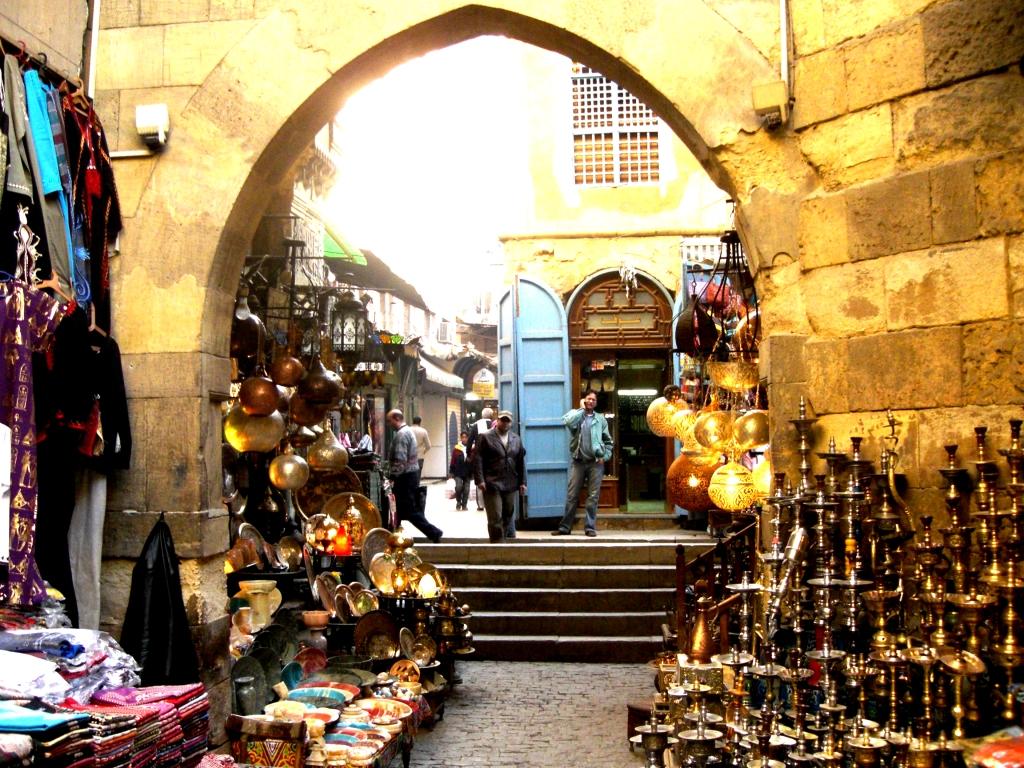Look at a physical map of north Africa — a map with brown mountains and green forests and beige deserts — and you will see thousands of miles of sandy beige, and, then, a thin green line. The Nile. Life giver. In ancient times, the rising and falling of the Nile was watched with an anxiety worthy of life and death. If annual floods were optimal, water turned desert into farmland. If the river rose too much, floods destroyed homes and took lives. If it didn’t rise, people starved.
It’s hard to understand the ancient Nile when looking at today’s tamer, better behaved version. Today’s Nile, held in check by the Aswan Dam, flows on a schedule. But just go out into the desert a bit, beyond the range of irrigation schemes, and you’ll see endless miles of sand. Stay long enough; you will feel that sand in your throat. You will feel the pull of the river. Of the water. Of life.
In Your Bucket Because …
- You’ll float in the wake of Cleopatra on one of the world’s classic river journeys.
- You’ll see 5,000 years of history.
- Good for history lovers, luxury travelers, tourists.
It is along the Nile, and even on the Nile, that most tourists in Egypt spend most of their time. The remains of the great Pharaonic civilizations – temples, tombs, and necropoli – are strung like pearls along the necklace of the river. One of the best ways to see them is on one of the more than 200 cruise boats that ply the Nile, cheerfully honking to each other as they pass or line up to go through the locks.
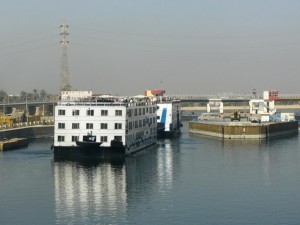
Nile Cruise Boats
For me, a first-time visitor with limited time, the benefits of river cruising were obvious: First of all is the convenience of being transported on a comfortable ship versus a bouncing bus (not to mention not having to pack and unpack every day).
Cruise boats range from moderate to luxury, but most of them look like a floating condo, and all have comfortable staterooms, dining rooms, and an upper deck for watching the shoreline float past. A typical itinerary is four or five days, depending on where you embark and disembark. The Aswan to Luxor run is popular, because both cities have airports. My itinerary was to fly to Abu Simbel, near the Sudan border to see the temples of Ramsses II and Nefertari, then fly to Aswan and float down to Luxor.
Note that lock maintenance (and sometimes, closures) can affect itineraries. Bus detours are organized if locks are closed. Also, waiting for a spot in a lock can take several hours during the busy season.
Nile Cruise Ports
Abu Simbel. The two enormous temples of Ramsses II and Nefertari were moved to their present position when the Aswan Dam was built. Several foreign governments helped with the project; as a thank you gift, the The U.S. received the temple of Dendur, which now stands in the Metropolitan Museum of Art in New York City. Early morning flights from Cairo are scheduled to arrive at Abu Simbel in time to see sunrise over the Sahara – although flight delays sometimes disappoint sleepy tourists.
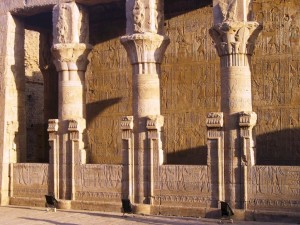
Aswan. Aswan is at the end of Lake Nasser, which was created by the Aswan Dam. Aswan itself doesn’t have many temples; most notable is the temple of Philae, which was also relocated when the Aswan Dam was built. The area is known for bird watching. Tours are also offered to local Nubian villages, though these can be disappointing, with more souvenirs offered than culture shared.
Kom Ombo. About 25 miles north of Aswan, Kom Ombo was once an important stop on caravan routes carrying gold. The Kom Ombo temple was dedicated to the crocodile god Haroeris and the falcon god Sobek. A collection of crocodile mummies was found here, some of which can be viewed.
Edfu. About 60 miles south of of Luxor, Edfu was a commercial and religious center. Its temple is one of Egypt’s best preserved ancient sites. It dates from the Ptolemic era (305-30 B.C.)
Luxor and Karnack. The temple complexes of these two adjacent cities are overwhelming – as is trying to absorb the many centuries of culture and history that are represented here. Karnack is the largest largest open-air religious site in the world, and it was built over nearly a thousand years starting in about 1600 B.C. Hundreds of sphynxes once lined the 2.5 kilometer road between Luxor and Karnack. The temples lead one into the next into the next into the next, spanning centuries and dynasties. Hieroglyphics are everywhere; occasionally in a dark protected corner, you can see remnants of some of the original colors and imagine the complexes as they once were, painted in brilliant hues. These sites can be extremely crowded in the high season, especially during school holidays.
Valley of the Kings and Valley of the Queens. These sites are accessed from Luxor and Karnack, but are on the other side of the river, which is also where you’ll depart for a hot air balloon ride (It’s well worth the 4 a.m. wake-up call!) over the Valley of the Kings. Not far away, the Temple of Hatshepsut (Egypt’s female pharaoh) sits in solitary grandeur.
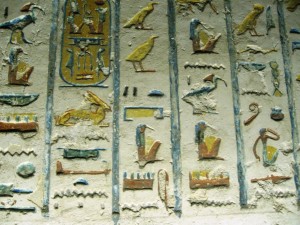
Squeezing into some of the tombs in the Valley of the Kings can be an exercise in claustrophobia: Some passageways are narrow and dark with low ceilings, and the crowds can be unnerving.
Tutankhamen’s is one of the most popular, but not nearly the most ornate. Traditionally, tombs of the pharaohs began to be painted when they ascended to the throne, but the boy king died so young that his tomb was still very simple. The treasures, however, made up for it. In the tombs of pharaohs who lived to a ripe old age, brightly colored hieroglyphs are in rich hues of blues, reds, golds, and greens, looking almost as though they were painted yesterday.
Indeed, a challenge for the Egyptian government is keeping these treasures accessible to tourists, yet protecting them from the effects of too much human traffic. CO2 and water vapor from breath damage the fragile ancient colors, so the tombs are opened and closed in a rotation. Don’t worry: There are too many to see in one visit, no matter which is closed.
A visit to Egypt is, quite simply, overwhelming. You can’t see it all, nor understand even a fraction of it. Some reading done in advance, especially about the major pharaonic periods and the gods, will help you understand the guides a little better.
Practicalities
Periodic unrest and political instability in Egypt can make some parts of the country unsafe. Check with the U.S. Department of State’s travel advisories before booking a trip.
Updated November, 2018
